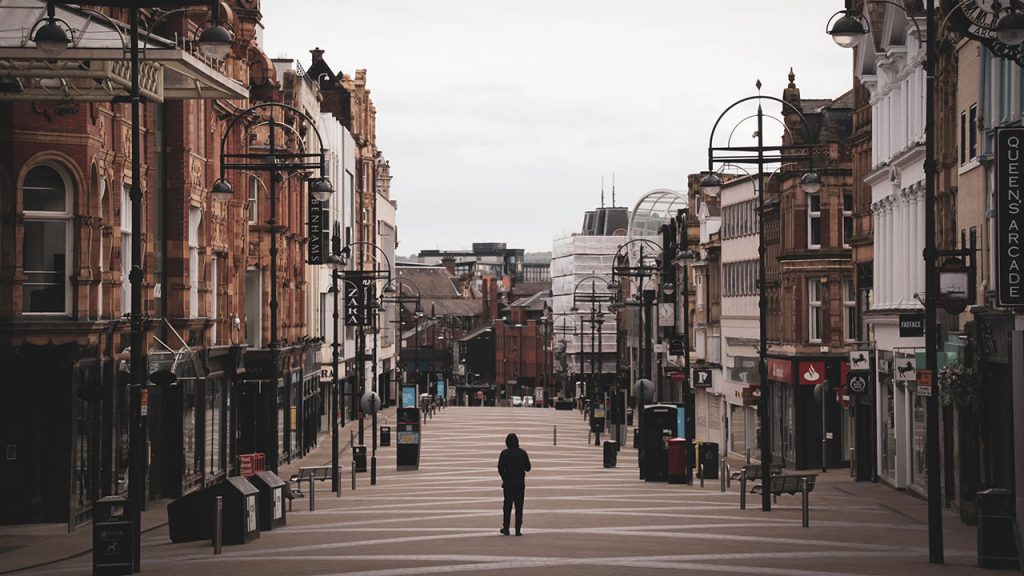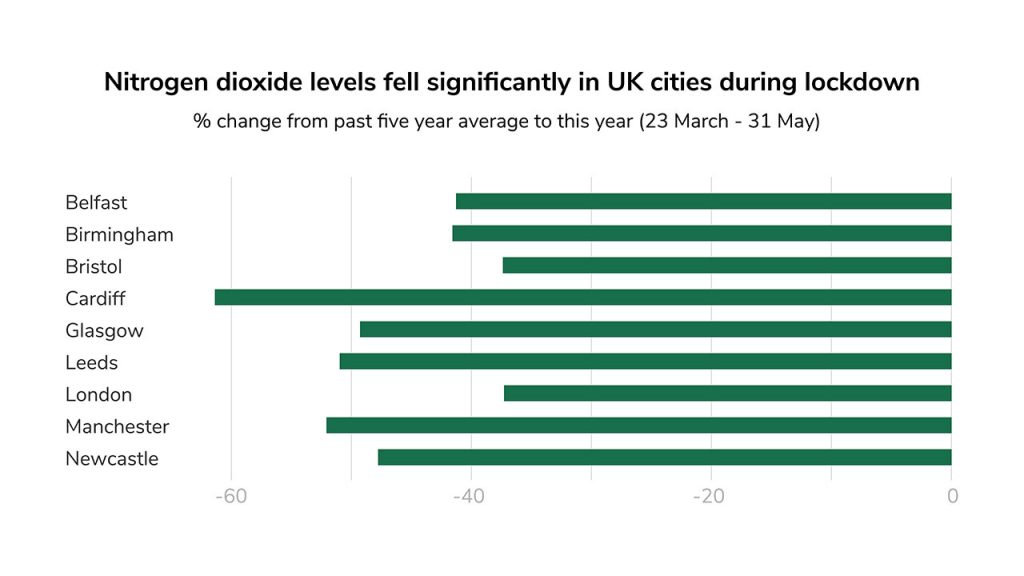
Air pollution down by 40% in cities during COVID-19 lockdown
Air pollution dropped sharply during the COVID-19 lockdown and new analysis shows where the biggest changes took place.
Updated figures show that nitrogen dioxide fell by over 40% in cities around the UK, while small particle pollution saw smaller changes.
Air pollution is the biggest environmental threat to health in the UK, with between 28,000 and 36,000 deaths a year attributed to long-term exposure.
Urban pollution
Scientists from the National Centre for Atmospheric Science calculated that levels of nitrogen dioxide were 43% lower in urban areas, compared to the same period over the previous five years.

“That’s a big change,” says Professor James Lee from the National Centre for Atmospheric Science and University of York.
“Especially considering that any reduction in pollution levels will benefit public health.”
Nitrogen dioxide is a toxic gas released from vehicle exhausts and can cause severe respiratory problems, the effects are worse for people who have existing conditions such as asthma.
The largest change was recorded in Cardiff, where levels of nitrogen dioxide were 60% lower. The decrease was between 40-50% in Belfast, Birmingham, Glasgow, Leeds, Manchester and Newcastle.
The data comes from the UK’s Automatic Urban and Rural Network (AURN), a network of air monitoring stations in cities, sited away from main roads – places that represent where people live.
Professor Lee says the changes in nitrogen dioxide are likely linked to lower levels of traffic in urban areas.
“Under lockdown restrictions, people were using vehicles far less frequently which means less traffic and less emissions of nitrogen dioxide.”
The data shows smaller changes for small particle pollution, known as PM2.5.
Belfast, Birmingham, Glasgow and Leeds benefited from reductions between 5% and 20%, but Bristol, Cardiff, London and Manchester saw small increases.
These tiny particles have a wide variety of sources, which might explain why they haven’t decreased as much as nitrogen dioxide.
Professor Lee believes that some pollution sources have been affected less than others by lockdown.
We know that vehicle use has decreased, but small particle pollution also comes from agriculture, wood burning and long-range transport. These haven’t been affected by lockdown as much.
Professor James Lee, National Centre for Atmospheric Science and University of York
One pollutant, ozone, has actually shown consistent increases in cities.
Levels of ozone have increased by 35% across many of the urban monitoring sites.
Ozone is helpful in the upper layers of the atmosphere where it protects us from the sun’s radiation, but at ground-level it’s a harmful pollutant.
Experts say that ozone pollution has likely increased as a result of the drop in nitrogen dioxide. Nitrogen dioxide triggers ozone-destroying reactions, so as nitrogen dioxide emissions start to drop off we can expect ozone levels to increase.
